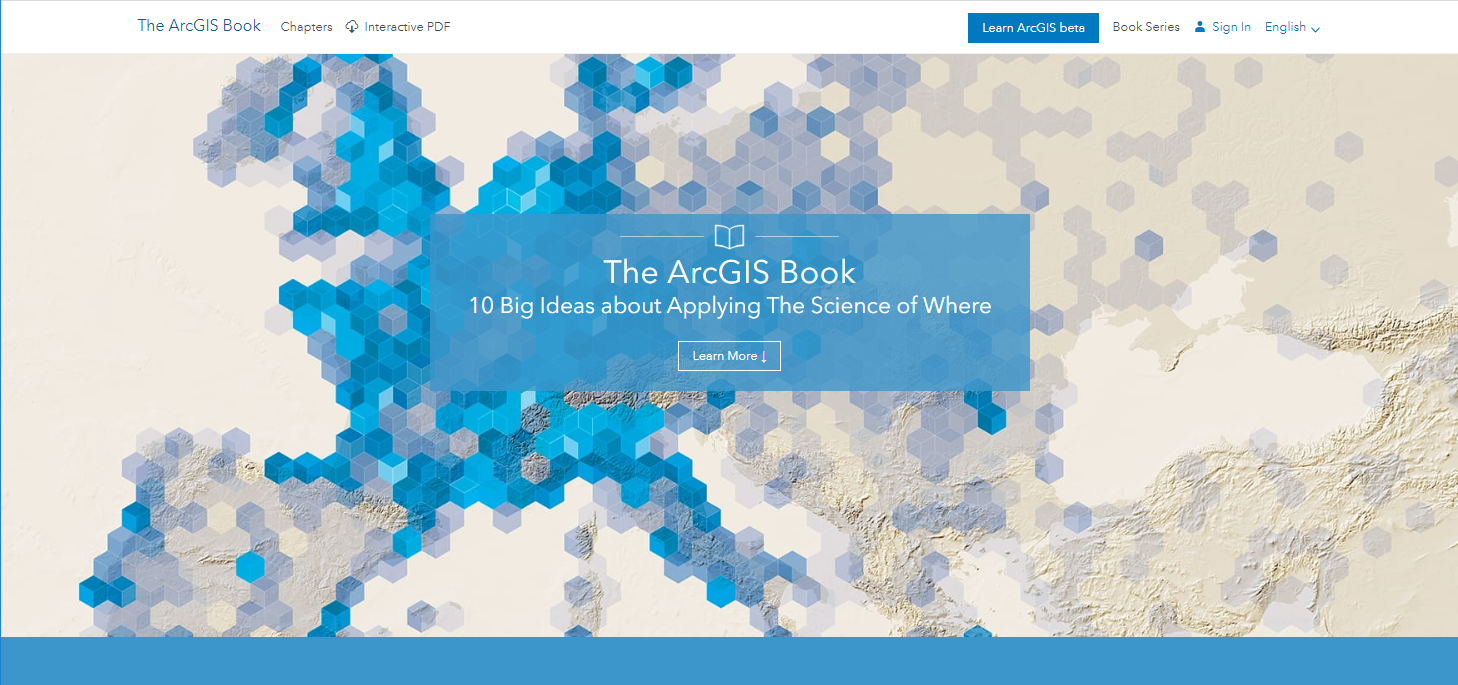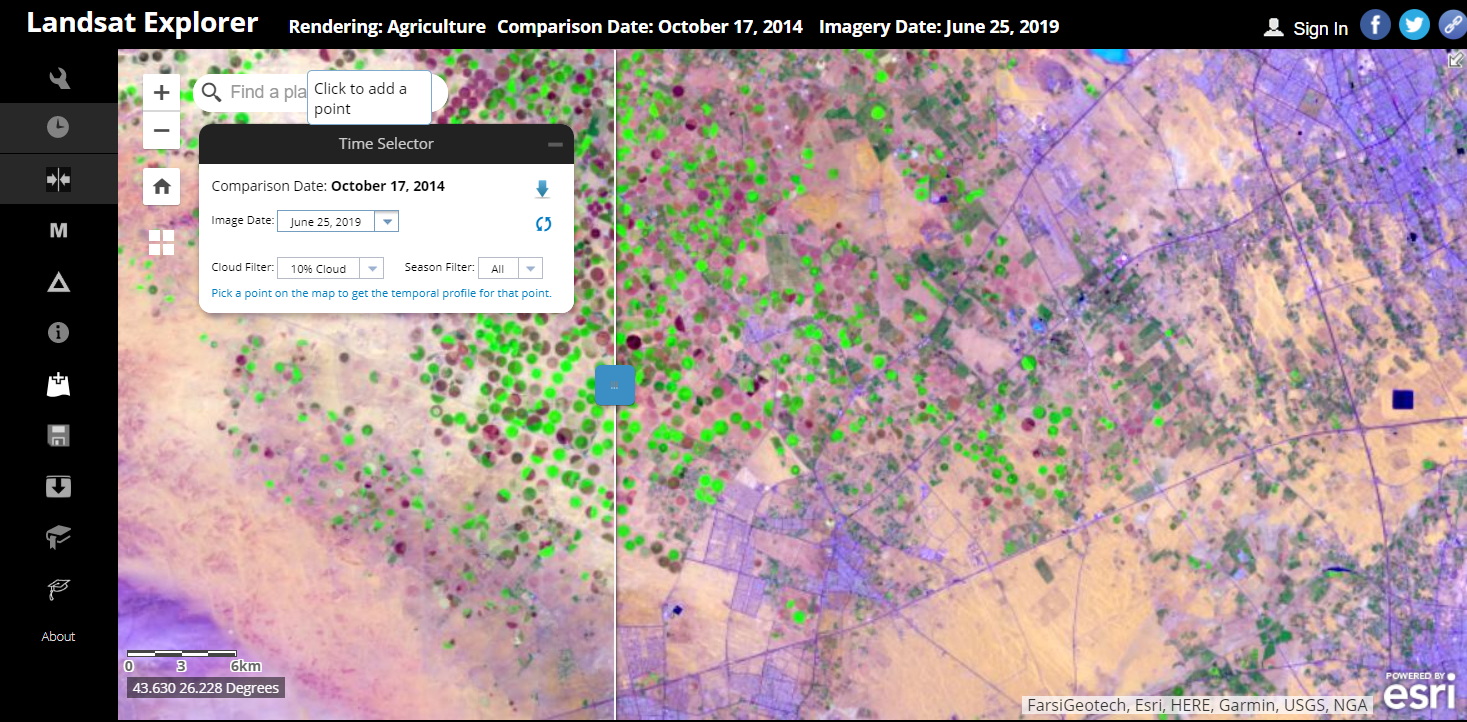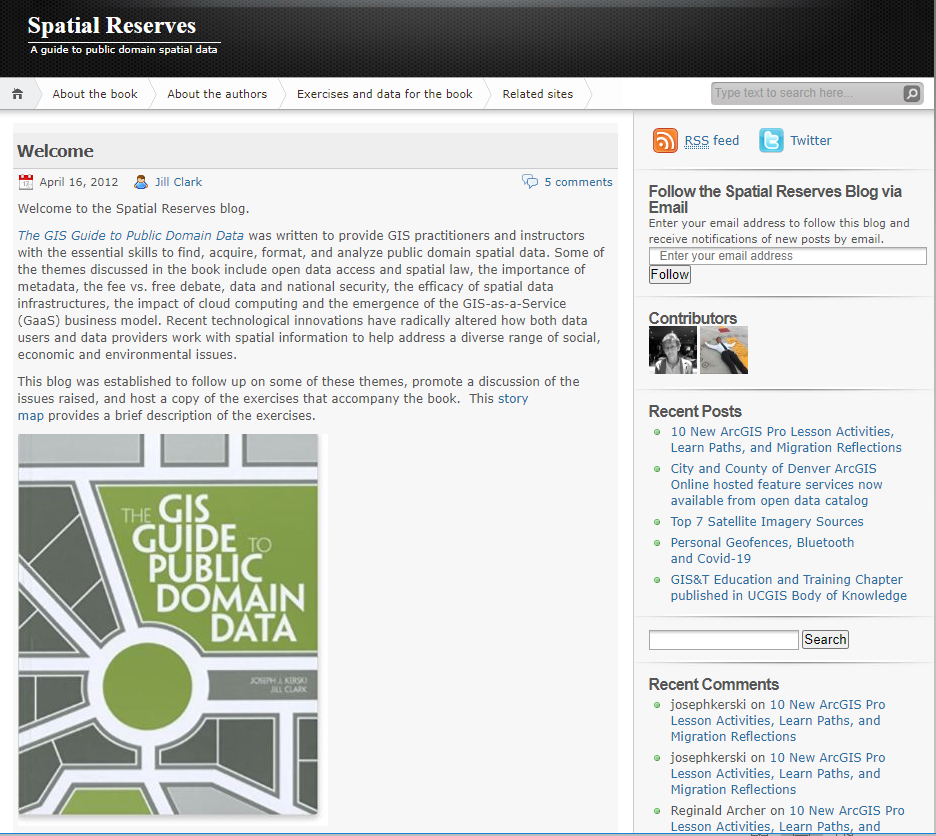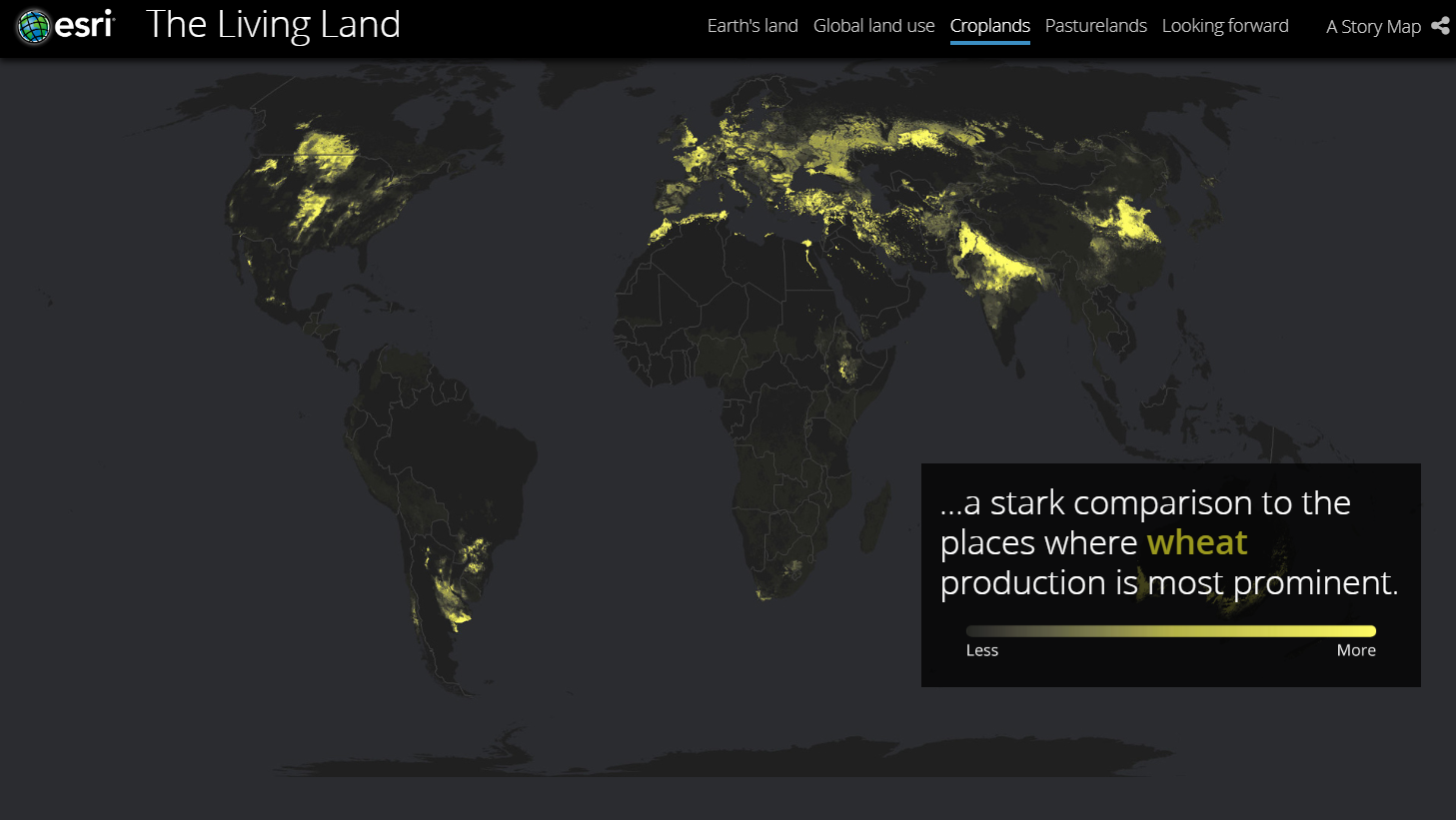- Home
- :
- All Communities
- :
- Industries
- :
- Education
- :
- Education Blog
- :
- Teaching and Learning about Earth Day and the Envi...
Teaching and Learning about Earth Day and the Environment using GIS
- Subscribe to RSS Feed
- Mark as New
- Mark as Read
- Bookmark
- Subscribe
- Printer Friendly Page
Introduction
We have always been fascinated with our home: The Earth. Our blue-and-green oasis of life in the solar system has been the subject of poetry, music, novels, scientific investigation, and—maps. For centuries, maps have stirred imaginations, inspired explorations of the unknown, and helped us understand our planet. Far from the static documents of the past etched on clay tablets, wood, film, and paper, today’s maps are interactive and digital. They can be combined with charts, satellite images, databases, photographs, videos, and other data to help us make sense of our world. They help us navigate to the library or to grandma’s house on an everyday basis, help us understand our communities and our world, and how to build a more sustainable and resilient future. These maps have become ubiquitous—on our smartphones, computers, in our vehicles, in trains and airplanes, and just about everywhere we turn.
These digital maps and the everyday activities that depend on them are possible because of Geographic Information Systems (GIS), and other technologies: Remote sensing, computer science, and Global Positioning Systems (GPS, or more broadly, Geographic Navigation Satellite Systems (GNSS)) to name a few. However, people make these technologies effective, applying them to solve problems. People using these maps and tools cultivate a spatial way of thinking, looking at the world from a geographic perspective, examining patterns, relationships, and trends, making wiser decisions about the future. These decisions include planning urban greenways, mitigating invasive weeds, locating the optimal site for wind energy, studying groundwater withdrawal impact on aquifers, and many more, from local to global scales.
Why Use GIS on Earth Day and in Environmental Science Education?
The central themes that scientists have studied for years have in recent decades become topics on daily news feeds, increasingly affecting our everyday lives. During the COVID-19 crisis, maps, dashboards, and infographics produced from GIS were viewed by the millions per hour, helping people and communities make wise decisions and plans. Connecting students with real-world data and issues builds spatial bridges in the brain and appeals to multiple ways of learning. Students learn to transfer knowledge, to inquire strategically, to connect to their community, and to solve problems with real data. Studying environmental issues with GIS lends relevancy and real-world contexts to these issues. Spatial analysis appeals to today’s visual learners.
Using GIS provides a way of exploring a rich body of content and a framework for holistic thinking about the world. GIS provides a set of skills grounded in content standards and fosters critical thinking about data and methods. Students using GIS grapple with current, relevant, important issues in STEM (Science Technology Engineering and Mathematics) disciplines, social studies (geography, history, economics, and civics), language arts, and other subjects. These include sustainable agriculture, natural hazards, water, energy, historical events, weather and climate, and more. GIS enables these issues to be analyzed spatially because they all have a geographic component—they occur somewhere, and change over space and time. Students see the big picture and understand how different patterns and trends are related. Students become involved digital citizens that can use technology in meaningful ways to ask the “what if” questions, test hypotheses, and model scenarios. The questions stem from a firm foundation in content, the spatial perspective, and spatial skills.
GIS can foster each of the Center for Ecoliteracy’s six core ecological concepts: Networks, nested systems, cycles, flows, development, and dynamic balance. GIS allows variables to be input, modeled and modified so that the dynamics of environmental processes can be studied. Hungerford and Volk (1991) defined nine key ecological concepts necessary for environmental education programs: Individuals and populations, interactions and interdependence, environmental influences and limiting factors, energy flow and nutrient cycling, community and ecosystem concepts, homeostasis, succession, humans as members of ecosystems, and ecological implications of human activities and communities. GIS can enhance the teaching of these concepts. The NAAEE’s definition of environmental literacy (NAAEE 2011) includes four interrelated components: competencies, knowledge, dispositions, and environmentally responsible behavior. Because the use of GIS involves the same tools used by scientists, GIS fosters learning each component. Teaching with GIS also connects well with several of the UN’s Sustainable Development Goals, such as water quality and quantity, energy, climate, and sustainable cities.
10 Ways in Which GIS Can Be Used in Earth and Environmental Science Education
GIS can be used in a wide variety of ways. GIS has rapidly evolved into a cloud-based SaaS (Software as a Service) environment, and thus is more accessible and approachable than ever before. GIS tools such as ArcGIS Online can be run on any device, at any time, using a modest web connection. Certain maps and tools can also be used offline. GIS can be accessed in a classroom with one computer and a projector, in a computer lab, and in the field. GIS can be used in multiple disciplines and to analyze a myriad of issues. Explore a few or all of these selected ways to use GIS in teaching and learning about the Earth.
1. Ask questions. Asking questions is the first part of scientific inquiry, forming the basis for knowing what types of environmental data to collect and what data to analyze and what decisions to make. GIS does not ask the questions, rather, it is the person using GIS who asks the questions. Be curious about the world. How does acid mine drainage in a mountain range affect downstream water quality? How will climate change affect global food production? Where are invasive plant species living in this alpine valley? Giving students a reason to learn is powerful. Start your journey with The ArcGIS Book. Then examine this series of Mapping Hour videos that demonstrate how to cultivate asking questions in the context of learning GIS tools.

The opening page of The ArcGIS Book, an excellent interactive way of discovering the world of GIS, and teaching with it.
2. Examine change over space and time. The Earth is a dynamic planet. Environmental phenomena interact, move, and change. Begin by comparing change over time using satellite imagery for the past six years using the Wayback imagery app, or for the past century in the USA using historical USGS topographic maps using a web mapping application. Explore changes in seasons for precipitation and soil moisture around the world using the Water Balance App.

The Wayback imagery app can be used to examine natural and human-caused changes to Planet Earth, here, the changing water levels at Lake Mead.
3. Explore human-environment interaction. How does the environment affect people, through such characteristics as daily weather and long-term climate, native plants and animals, landforms, the availability of water, local and regional natural hazards, and the type of predominant soils? Conversely, how do humans affect their environment? Begin by examining ecological land units with this interactive map, and then examine urbanization, agriculture, and other land use with the Landsat Explorer app.

Comparing Landsat imagery on the Arabian peninsula to detect changes in agriculture and urbanization using the Landsat Explorer app.
4. Explore environmental content. Not only does GIS use enhance earth and environmental studies, but also conversely, a firm grounding in environmental content enhances the use of GIS. One way to begin exploring map-based environmental content is through the ArcGIS Living Atlas of the World. The atlas includes thousands of data layers from ocean currents to biomes, from watersheds to energy production. As the name implies, it is curated, continuously updated, and includes live feeds from buoys, stream gauges, seismographs, weather stations, and other data sources. Many maps and data layers are available through an ordinary web browser, while some require an ArcGIS Account to use (a link to a free account is here).
5. Work with data. Data skills are especially critical in the modern world, due to data’s increasing volume and diversity, and given its often sensitive and politically charged nature. Using GIS involves managing databases, tables, maps, feeds, imagery, vector and raster files, to name a few. Start by using ArcGIS Online: Modify Map, add data, change the symbology. Change the classification and note how the map’s appearance changes. Filter the data. Tutorials, MOOCs, and lessons can help you begin. Be critical of mapped data, however: Understand who created it, how often it is updated, its scale, and other aspects via its metadata, as this book and blog invite you to do (Kerski 2015).

Teaching and learning about data sources, data quality, and societal issues surrounding data is the focus of the Spatial Reserves book and blog.
6. Collect data in the field. A new citizen science field app was created for Earth Day by the Earth Day Network, the Wilson Center, and the US Department of State, using the App Studio for ArcGIS by Esri. It invites you and your students to find, photograph, and classify plastic pollution in your community. Another tool is Survey123, which allows you and your students to quickly create a field survey, collect data into it, and map and analyze the results. Data from other citizen science tools such as iNaturalist can be brought into a GIS environment for spatial analysis.
Using these tools, students can understand, “How does pH vary along this stretch of river, and why? How do tree species and tree height change depending on slope angle, slope direction, and why? Fieldwork has additional benefits: Louv 2006 and others have shown that if students do not receive repeated and deep immersion in natural places while young will not value or appreciate natural places and associated issues as adult decision-makers. Sobel’s “Beyond Ecophobia: Reclaiming the Heart in Nature Education” (1996) states that essential to helping students to understand environmental issues in distant lands is to cultivate connections to the local environment, teaching about local systems. “What’s important is that children have an opportunity to bond with the natural world, to learn to love it, before being asked to heal its wounds,” Sobel wrote. This can be done through his stages of empathy, exploration, and social action.
7. Solve problems. GIS was created specifically to solve problems. A series of GeoInquiries are short lessons that invite you to dig into natural hazards and environmental issues, each tied to a single interactive web map with no log in required. A library of Learn ArcGIS lessons digs further into specific problems and skill building, from predicting the weather to assessing landslide and flood potential.
8. Gain career skills. GIS was a green tool long before “green” was popular. GIS began in the mid-1960s, just before the first Earth Day in 1970. GIS is used on a daily basis to benefit the environment, from protecting elephant habitat in Africa to planning urban greenways in the local community. GIS offers career pathways increasingly in demand according to the U.S. Department of Labor (Gewin 2004). Students who are well grounded in the spatial perspective through GIS are better able to use data at a variety of scales, in a variety of contexts, think systematically and holistically, and use quantitative and qualitative approaches to solve problems. In short, these graduates are better decision-makers. View these videos and interviews with people using GIS everyday on the job. Share your skills with others by becoming a geomentor. Learn more about mentoring here and here.
9. Communicate your results. Sharing and collaborating is how today’s complex problems will be solved. As environmental science has become more quantitative and analytical during the past century, GIS is the perfect tool in which to study processes through databases, maps, and spatial statistics. Yet there is still plenty of room for art, creativity, and qualitative data. Start by examining multimedia storymaps and consider making one of your own on a topic of your choice.

Part of the Age of the Anthropocene set of story maps showing the human imprint on Earth; here, patterns of specific agricultural crops.
10. Act. Students engaged in GIS and environmental studies engage in the geographic inquiry process: Asking geographic questions, acquiring geographic resources and data, analyzing geographic data, assessing and making decisions from resulting geographic information, and acting on that geographic information. This often leads to additional geographic questions, and the cycle continues. However, using GIS is not just to gain skills and knowledge: Don’t just get discouraged: Be encouraged to act. Once litter or invasive species are studied and mapped, what can be done about them? How can a plan be implemented, stakeholders gathered, and results achieved? Discover how people are using GIS to solve problems in society in different professions in these case studies.
Modern GIS is a platform upon which sound environmental decision making is based. GIS is a system: As with any system, it is comprised of many pieces. Give yourself time for the journey, but the key is to start. People empowered with GIS and data can make a positive impact on our world!
References
Gewin, Virginia. 2004. Careers and recruitment: Mapping Opportunities. Nature. 427: 376-377.
Hungerford, Harold R., and Trudi L. Volk. 1998. Curriculum Development in Environmental Education for the Primary School: Challenges and Responsibilities. Essential Readings in Environmental Education. Champaign, IL: Stipes.
Kerski, Joseph J. 2015. Why data quality matters --now more than ever. Directions Magazine. https://directionsmag.com/article/1213.
Louv, Richard. 2006. Last Child in the Woods: Saving Our Children from Nature-Deficit Disorder. Chapel Hill, NC: Algonquin Books.
NAAEE. 2011. Developing a framework for assessing environmental literacy: Executive Summary. NSF project report. Washington, DC: North American Association for Environmental Education.
Sobel, David. 1999. Beyond Ecophobia: Reclaiming the Heart in Nature Education (Nature Literacy Series, Vol. 1) . Orion Society.

Selected tools and maps described in this essay: Clockwise from upper left: An agriculture story map, the ecological land units of the world map, the Landsat Explorer app, and The ArcGIS Book. Try them!
You must be a registered user to add a comment. If you've already registered, sign in. Otherwise, register and sign in.
-
Administration
80 -
Announcements
80 -
Career & Tech Ed
1 -
Curriculum-Learning Resources
259 -
Education Facilities
24 -
Events
72 -
GeoInquiries
1 -
Higher Education
598 -
Informal Education
281 -
Licensing Best Practices
93 -
National Geographic MapMaker
33 -
Pedagogy and Education Theory
226 -
Schools (K - 12)
282 -
Schools (K-12)
273 -
Spatial data
35 -
STEM
3 -
Students - Higher Education
246 -
Students - K-12 Schools
129 -
Success Stories
36 -
TeacherDesk
1 -
Tech Tips
121
- « Previous
- Next »